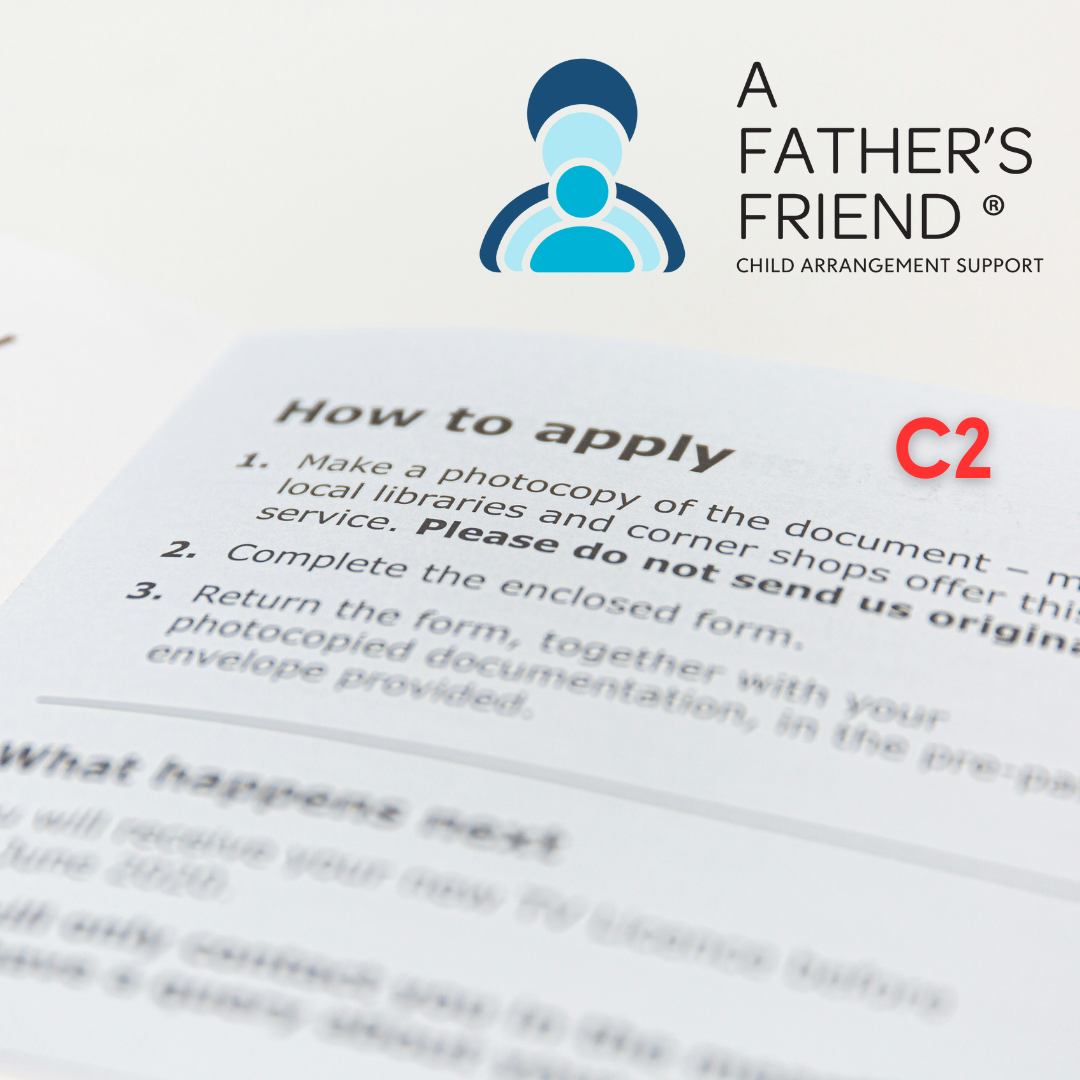What is a C2 Form Application in the Family Court?
When dealing with child arrangements in the Family Court, there may be occasions where you need to make a formal request during the life of a case that isn’t covered by the standard forms. One of the most common ways to do this is through a C2 application.
In this blog, we break down what a C2 application is, when and why it’s used, how to complete it, and how it can be submitted to the Family Court.
What is a C2 Application?
A C2 application is a formal court form used to make interim or ancillary applications within an existing set of Family Court proceedings, or to apply to be added as a party to an ongoing case. It is often used when a party seeks permission (known as “leave”) to apply for a Child Arrangements Order, or wishes to request a specific direction or variation in a case that is already underway.
It’s not used to start proceedings — that’s done using the C100 or other originating application forms — but rather to intervene, modify, or seek directions during the course of proceedings.
When is a C2 Application Used?
Here are some common examples where a C2 application might be used:
Requesting permission to be joined to a case: For example, a grandparent or extended family member seeking to be added as a party in care or private law proceedings.
Applying for permission to file an application: For example, if a person does not have automatic parental responsibility, they may need permission to apply for contact or residence (live with) orders.
Asking for a specific direction: Such as asking the court to vary existing arrangements, accelerate a hearing date, or order a party to disclose documents.
Changing the hearing format: For example, requesting remote attendance or protective measures.
Requesting urgent or emergency hearings: Including where safeguarding concerns arise and immediate judicial oversight is required.
Who Can Make a C2 Application?
Not everyone can apply to the Family Court for a Child Arrangements Order without permission. This is where the C2 application often comes in.
Parents or individuals with parental responsibility can apply directly to the court for a Child Arrangements Order using a Form C100 — they do not need to request permission.
However, others who do not hold parental responsibility — such as grandparents, stepparents, extended family members, or close family friends — must first ask the court for permission (known as leave) to make the application. This is typically done using a C2 application.
A C2 form is also used by someone seeking to be added as a party to an existing case or to request a specific interim direction from the court within ongoing proceedings.
How to Complete a C2 Form
The form can be downloaded from the Ministry of Justice website or obtained directly from the Family Court.
You’ll need to provide:
Your personal and case details
The name of the child(ren) and their dates of birth
Details of the existing proceedings (if applicable)
What you are asking the court to do (the application itself)
A brief explanation of why the application is being made
Where permission is required (e.g. for a grandparent to apply for a Child Arrangements Order), you must explain why the court should allow the application.
A supporting statement (sometimes called a ‘witness statement’ or ‘supporting letter’) is strongly recommended and should outline the background, the rationale for the application, and how it is in the child’s best interests.
How to Submit a C2 Application
There are three primary routes depending on your local court and whether the case is ongoing:
Email: Most courts now accept scanned copies of signed C2 applications via email. You can find the court’s email address on the Find a Court or Tribunal service.
In person at the court counter: You may hand-deliver the completed form (and any supporting documents) to the court. Some courts require appointments, so it’s advisable to call ahead.
By post: You can send it to the relevant Family Court address, ensuring you keep copies and obtain proof of postage.
It is best to check with your local court regarding its specific procedures — some require digital filings; others still operate in a paper-based system.
Do You Pay a Court Fee?
If you are already a party to proceedings and are asking for directions, there may be no fee.
If you are applying to be joined to proceedings or are requesting permission to file an application, a fee may apply (usually £184 as of 1st April 2025) (*fees may increase year on year).
You may be eligible for help with fees through the EX160 fee remission scheme if you’re on low income or benefits.
Final Thoughts
The C2 application is a vital tool in family proceedings, particularly in complex or evolving cases. Whether you’re a parent, grandparent, or other concerned adult, it provides a route to raise specific requests with the court when other forms don’t quite fit the bill.
If you’re unsure about whether a C2 application is right for your situation — or need help preparing one — don’t hesitate to get in touch with A Father’s Friend. Our team of experienced professionals can guide you through the process with care and clarity, ensuring your voice is heard and your case is presented appropriately.
Need Help Making a C2 Application?
📞 Contact us today or visit www.afathersfriend.co.uk for support with child arrangements, court forms, and representing yourself in the Family Court.

